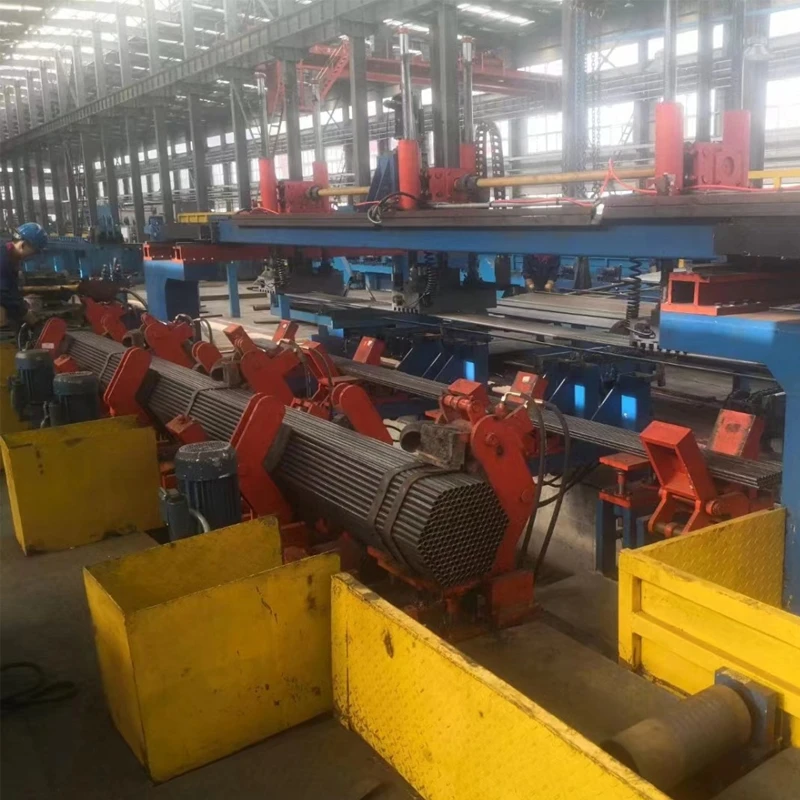wire straightening and cutting
Wire Straightening and Cutting A Comprehensive Overview
Wire straightening and cutting are essential processes in various industries, including manufacturing, construction, and metalworking. These processes ensure that wire products meet specific design requirements and are suitable for a wide range of applications. This article will delve into the importance of wire straightening and cutting, the methods used, and their applications in different sectors.
The Importance of Wire Straightening and Cutting
Wire is produced in coil form, which often results in bends, twists, and irregularities due to the manufacturing process. Straightening is crucial because these deformities can lead to complications during further processing, such as welding, bending, and forming. Irregular wire may not fit correctly into components, leading to quality issues and increased production costs.
Cutting is equally important as it determines the length of wire segments that will be used in final products. Accurate cutting is essential for maintaining consistency and ensuring that the wire fits perfectly in its designated application. Whether it’s for creating springs, connectors, or other components, improperly cut wire can lead to significant issues, including structural weaknesses and product failures.
Methods of Wire Straightening
The straightening process usually involves several steps, which can be done through mechanical or hydraulic methods
.1. Mechanical Straightening This method uses a straightening machine equipped with rollers and stationary blocks. As the wire passes through the machine, the rollers apply pressure at various angles, gradually forcing the wire into a straightened position. This method is commonly used for softer wires and provides good efficiency and accuracy.
2. Hydraulic Straightening In this method, hydraulic cylinders push the wire against a series of mandrels or fixtures. The high-pressure system allows for the straightening of tougher materials that may not respond well to mechanical straightening. Hydraulic systems can also be adjusted for varying thicknesses of wire, providing versatility in production.
3. Heat Treatment In some cases, heat treatment may be used prior to straightening to make the wire more malleable. Heating the wire alters its microstructure, allowing for easier straightening. This process is more common in high-strength wire where standard mechanical methods may not suffice.
Methods of Wire Cutting
wire straightening and cutting

Wire cutting can be performed using various techniques depending on the wire's material, thickness, and required precision.
1. Shearing This is one of the most common cutting methods, which involves applying a shearing force to cut through the wire. Shearing machines can be automated to increase production speed and accuracy, making them ideal for use in large-scale operations.
2. Laser Cutting For high precision and complex shapes, laser cutting technology is employed. A focused laser beam melts or vaporizes the wire at specific points, allowing for intricate designs and lengths to be achieved. This method is particularly useful in the electronics and automotive industries, where precision is critical.
3. Plasma Cutting Similar to laser cutting, plasma cutting uses ionized gas to achieve high temperatures capable of cutting through metal. This method is often used for thicker wires and is favored for its speed and efficiency.
4. Snipping or Manual Cutting For smaller operations or repairs, manual cutting tools such as wire snips or cutters may be used. While less efficient for mass production, manual cutting allows for quick adjustments on-site and is often used in crafts, repairs, and small-scale fabrications.
Applications Across Industries
Wire straightening and cutting find applications across a multitude of sectors. In the automotive industry, straightened wire is used in the manufacturing of various components such as suspension systems and wiring harnesses. In construction, straightened rebar is crucial for creating durable structures. The electronics sector relies heavily on precision-cut wire for circuits and connectors, ensuring reliable functionality and performance.
Moreover, industries including aerospace, telecommunications, and medical devices also utilize straightened and cut wire for their components, demonstrating the universal need for these processes.
Conclusion
Wire straightening and cutting are foundational processes that significantly impact the quality and usability of wire products across various industries. With advancements in technology and machinery, the methods of straightening and cutting have become increasingly efficient, allowing manufacturers to produce high-quality wire products that meet the stringent requirements of modern applications. Understanding these processes is vital for anyone involved in the manufacturing and production industry, highlighting their role in ensuring product integrity and performance.
-
High Frequency Straight Seam Welded Pipe Production Line-BzZhou Xinghua Machinery Equipment Manufacturing Co., LTD.|Precision Welding, High EfficiencyNewsJul.30,2025
-
High Frequency Straight Seam Welded Pipe Production Line|BzZhou Xinghua|Precision Welding&EfficiencyNewsJul.30,2025
-
High Frequency Straight Seam Welded Pipe Production Line - BzZhou Xinghua|Precision Engineering&EfficiencyNewsJul.30,2025
-
High-Frequency Straight Seam Welded Pipe Production Line-BzZhou Xinghua Machinery Equipment Manufacturing Co., LTD.NewsJul.30,2025
-
High-Frequency Straight Seam Welded Pipe Production Line-BzZhou Xinghua Machinery Equipment Manufacturing Co., LTD.|Precision Manufacturing, High EfficiencyNewsJul.30,2025
-
High Frequency Straight Seam Welded Pipe Production Line-BzZhou Xinghua Machinery Equipment Manufacturing Co., LTD.|Precision Steel Pipe Manufacturing&Industrial EfficiencyNewsJul.29,2025


